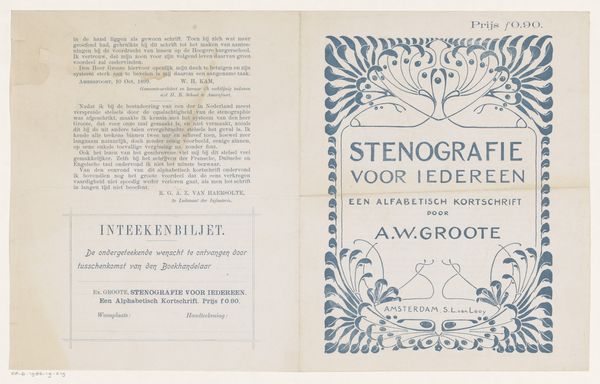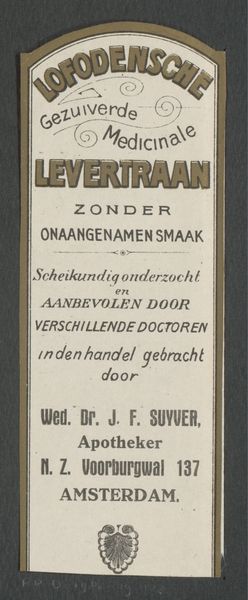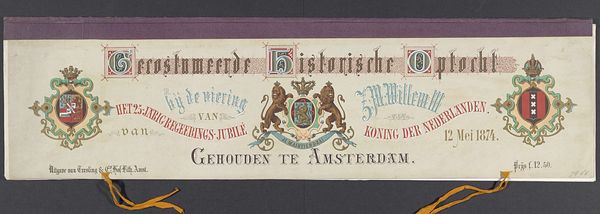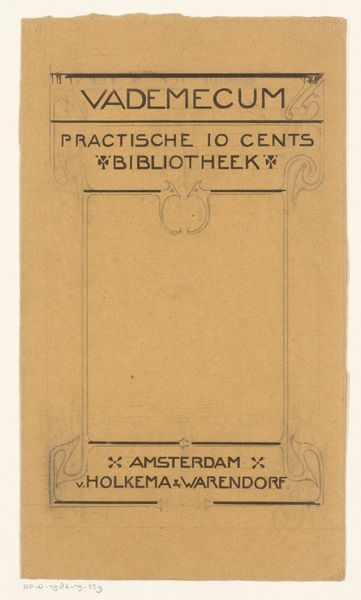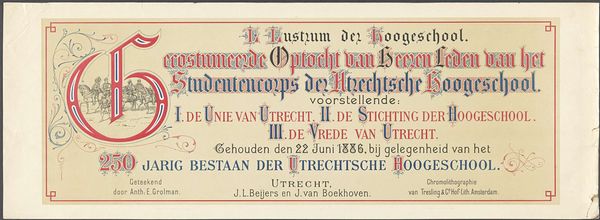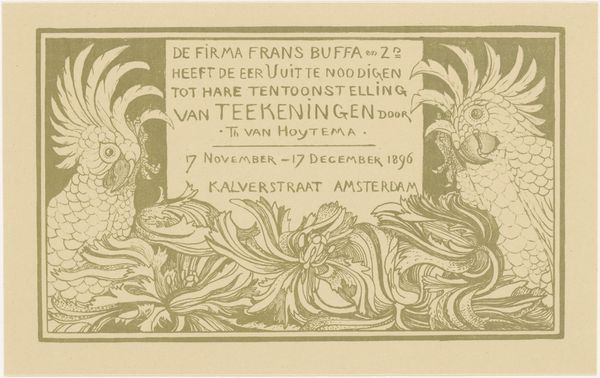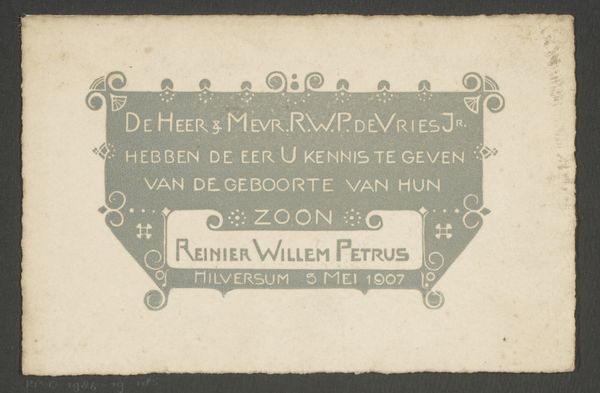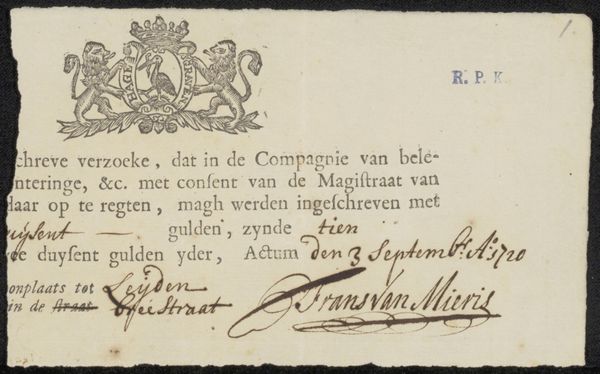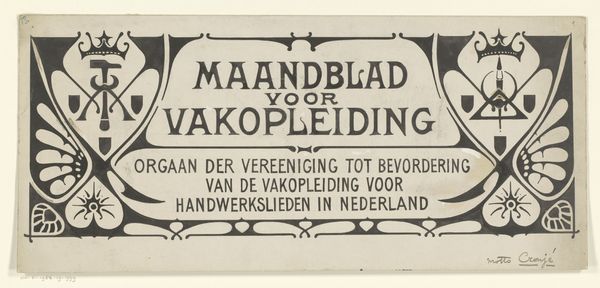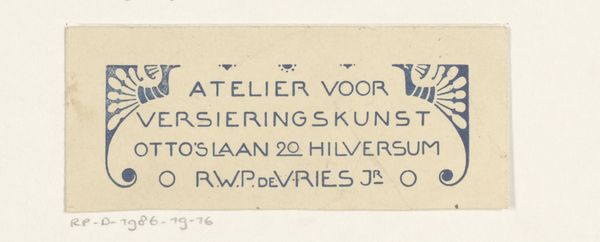
Bovenste deel van een ontwerp voor een rekeningblaadje van Wed. Dr. J.F. Suyver, apotheker te Amsterdam 1884 - 1952
0:00
0:00
graphic-art, typography, poster
#
graphic-art
#
type repetition
#
aged paper
#
art-nouveau
#
script typography
#
hand-lettering
#
old engraving style
#
hand drawn type
#
personal sketchbook
#
typography
#
hand-drawn typeface
#
golden font
#
poster
#
historical font
Dimensions: height 22 mm, width 37 mm
Copyright: Rijks Museum: Open Domain
Editor: So, this is "Bovenste deel van een ontwerp voor een rekeningblaadje van Wed. Dr. J.F. Suyver, apotheker te Amsterdam," dating from sometime between 1884 and 1952, by Reinier Willem Petrus de Vries. It seems to be a design for a pharmacist's bill, with some rather striking typography. What jumps out at you about this work? Curator: It’s interesting to consider this as a design object tied directly to commerce and labor. Look closely at the lettering – hand-drawn, influenced by Art Nouveau. We can see the artist’s hand so clearly. Editor: Right, the hand-drawn quality. How does that connect with its commercial purpose? Curator: In this period, mass production and handcrafted goods were often intertwined. The design would have likely been transferred to a printing plate for mass production. It elevates everyday commerce, doesn’t it? This bill becomes more than just a receipt, it becomes a piece of art reflecting the craftsmanship valued in that era. Editor: So, it bridges art and practical use, almost disguising the labor involved. The aesthetic is pleasing, but behind it is the industry of a working pharmacy. Curator: Precisely. Think about the social context – Amsterdam as a center of trade, the role of the apothecary. This design reflects not just aesthetic taste but also the value placed on precision and skill. It highlights how materials, processes, and commerce were woven together in daily life. Where does one end, and the other begins? Editor: It is fascinating how a simple receipt becomes a window into the economic and artistic currents of the time. I see it as more than just an artifact now. Curator: And that perspective is the essence of seeing art not as isolated objects, but as products and reflections of their socio-economic environment. I find it more relevant now than ever.
Comments
No comments
Be the first to comment and join the conversation on the ultimate creative platform.
